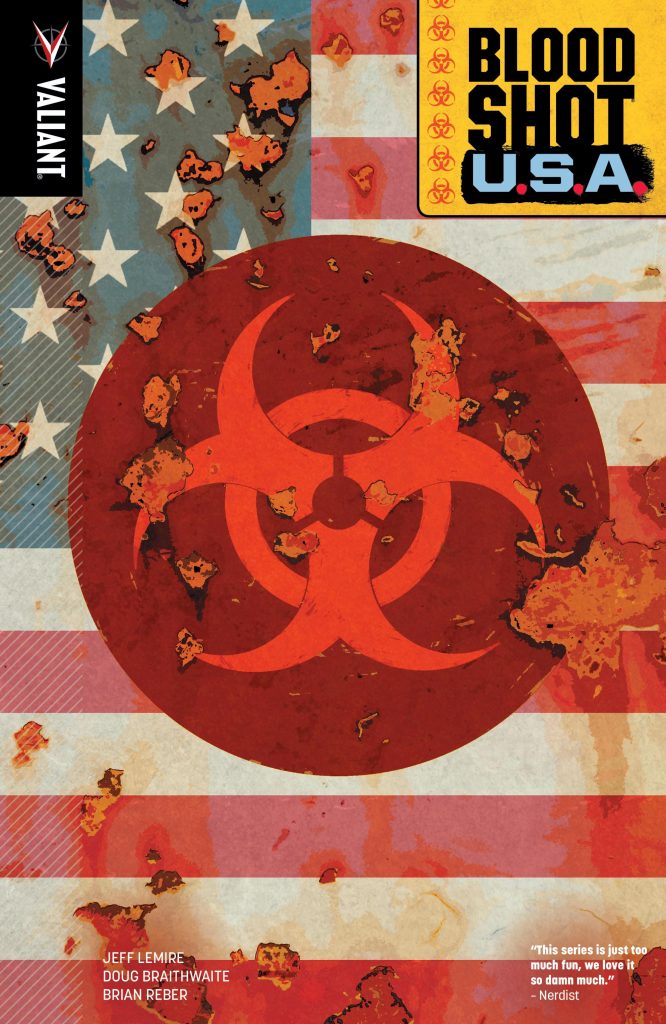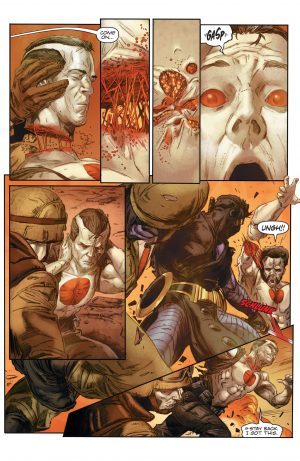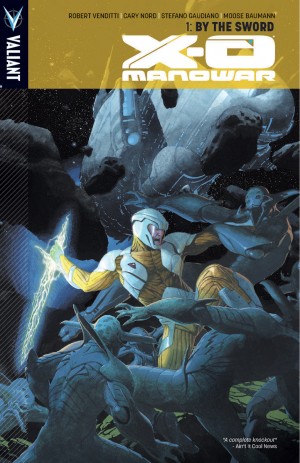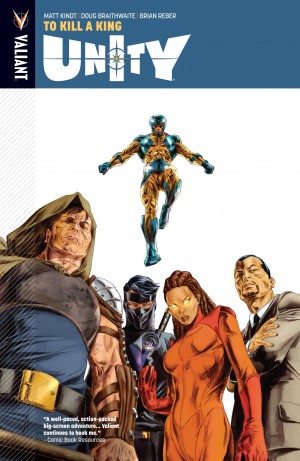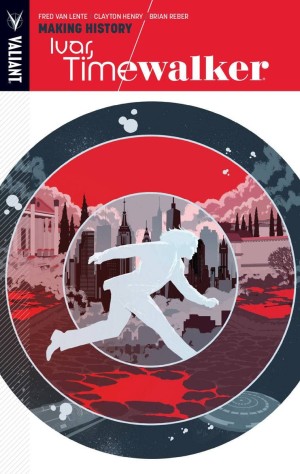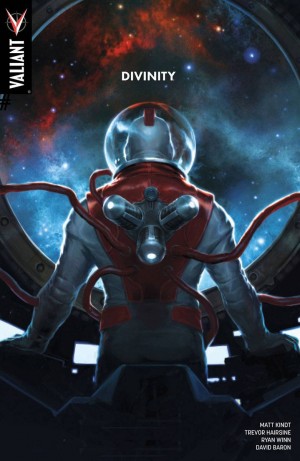Review by Frank Plowright
It was belatedly revealed in Bloodshot Island that the entire Bloodshot Reborn series led to Bloodshot U.S.A. The Ray Garrison version of Bloodshot was the latest in a long line of experimentation with nanites, their abilities becoming progressively more refined the more computer technology advanced. In Garrison’s case it was sufficient to heal almost instantaneously what would be fatal wounds for ordinary humans, with training turning him into the perfect warrior. This, however, wasn’t the entire game plan, and Bloodshot Island ended with everyone in New York transformed by nanites into enraged killing machines.
The background element of Bloodshot U.S.A. is Jeff Lemire’s tale of greedy, unprincipled men who see high office as a means of increasing their profits, and who are utterly without conscience when it comes to the fates of those without their advantages. The foreground action is a desperate battle to save New York and its inhabitants when nanites have been introduced to the air and water, so ensuring everyone is affected, be they superhero or ordinary human. Lemire seems to have figured out all the wrinkles in ensuring Project Rising Spirit, creators of the nanites, are on top of the situation. They can activate or deactivate the technology remotely, any superhero entering the area will be infected, and if something doesn’t go to plan they have an ace in the hole. However, because he’s figured that out, Lemire has also figured the way out, and it’s a tidy piece of plotting that he foreshadowed early in the Bloodshot Reborn run.
When you’ve got Doug Braithwaite drawing a finale, there are no concerns about it looking spectacular. First rate storytelling combines with an eye for dynamic breakdowns. There are so many memorable images here, among them Unity’s giant transporter craft stretching across New York, the presence of Deathmate, where he makes super-advanced transformative technology really sparkle, and convincing scenes of children. Some of Braithwaite’s pencilled pages are reproduced in the back of the book, enabling real study of his craft.
Renato Guedes illustrates a postscript, an epilogue mopping up loose plot threads and providing sentimental closure to the cast Lemire introduced over the course of Bloodshot Reborn. It’s nicely drawn, and avoids definitive endings. For those who want to draw a line here, it’s possible, but for anyone wanting more of the cast, Lemire picks some of them up again in Bloodshot Salvation.
